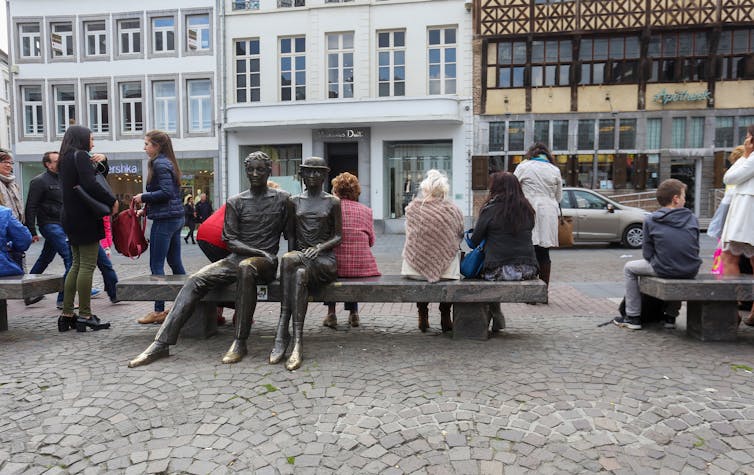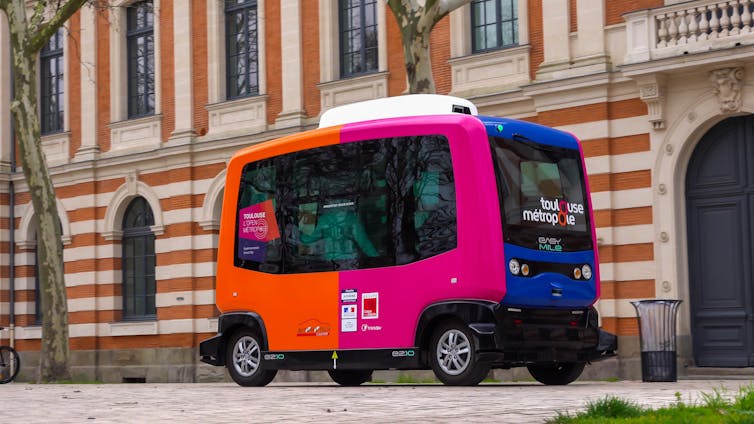
Subscribe & Follow
Free public transport doesn't add up - unless you get rid of the drivers

FraserEliot/Flickr, CC BY-NC
But the evidence suggests that offering free public transport causes headaches for local authorities – and may not be an effective way of getting commuters to stop driving cars. Tallinn, capital of Estonia, introduced free public transport for residents in 2013. But a 2014 survey showed that most of the people who switched to public transport had previously walked or cycled, rather than driven. A further survey in 2017 showed that patronage had increased by only 20% over four years.
In the April 2018 edition of German trade publication Stadtverkehr, Naumann claims that the only cost-effective way to get car drivers to switch to public transport is to couple reasonably priced transit with severe traffic restraints. For example, in the English city of Sheffield, attractive bus fares and timetables used to keep cars out of the city centre. From the 1970s, until the service was deregulated in 1986, there was simply no need for residents to drive into Sheffield.
Finding the funds
The biggest drawback to free public transport schemes is the lack of funds from fares to cover maintenance and upgrades. In Tallinn, for example, the city’s inadequate tram system will eventually require capital for a complete renewal – or face closure. Hasselt, a Belgian town with a population of 70,000, offered free bus travel for 16 years until 2013, but eventually scrapped it when costs became unsustainable.

Waiting for a bus in Hasselt. Marat Yakhin/Shutterstock.
Paris, meanwhile, has already banned the most polluting vehicles and offered free public transport for a few days each year when pollution has reached dangerous levels due to atmospheric conditions. But according to Haydock, writing in the June 2018 edition of Today’s Railways EU, traffic is rarely reduced more than 10% on these days, and the long-term shift to other forms of transport is minimal.
In the UK, free bus travel for senior citizens has hastened the demise of many rural and intercity services. Many local authorities have diverted support away from rural, evening and weekend services, to the concessionary fares budget. During interviews with BBC Radio 4, younger people – who rely on buses to get to work or go out on the evenings and weekends – complained that services had been axed to offer senior citizens free travel during daytime on weekdays.
But irrespective of your age, health or prosperity, there is no point in having a free bus pass if there are no buses to use it on. As bus services are further deregulated in the UK, there will continue to be pointless oversupply on some corridors, while other areas struggle to see more than a few buses per week – if any at all.
Driverless minibuses
The development of autonomous electric minibuses could be a game changer, especially if a manufacturer is prepared to lease them on favourable terms. Local authorities could pilot a scheme whereby the bus is “hailed” by smart phone 15 to 30 minutes before departure. Indeed, tests for autonomous on-demand services are already underway in cities across the US, UK and Europe.

An autonomous minibus, on trial in Toulouse. Irina Capel/Shutterstock.
Once the expensive and restrictive labour element is removed from the operating costs, there is no reason why such services could not be offered free of charge to all users. In the urban core – within a 10km radius of a city centre – these services could run 24/7. Further afield, in the suburbs, a daily service from 6am until midnight would probably be sufficient to compete with the private car.
Autonomous minibuses could automatically connect with city buses and trains, which would continue to be staffed and paid for by fares. The minibuses would provide a “last mile” service, taking people within an easy walking distance of their destination. In urban areas, all residential and business premises would be within 200m of a minibus stop, extending to 500m in suburban areas and 1km in rural areas.
At off-peak times, the minibuses could replace some conventional bus services to avoid the inefficiencies created when a 70 passenger bus is used to transport only ten people on an evening or Sunday service.
To prevent abuse of the minibuses, passengers would scan their phones onboarding to confirm the booking. If they didn’t, a penalty could be collected automatically from their phone. CCTV could identify any disruptive passengers and refuse further bookings. Meanwhile, taxis would continue to prosper from those people willing to pay for a personal door-to-door service.
![]() Public transit systems, as we know them today, would struggle to deliver a sustainable free service. But there’s a real possibility that the autonomous vehicles of tomorrow could do just that.
Public transit systems, as we know them today, would struggle to deliver a sustainable free service. But there’s a real possibility that the autonomous vehicles of tomorrow could do just that.
This article was originally published on The Conversation. Read the original article.
Source: The Conversation Africa

The Conversation Africa is an independent source of news and views from the academic and research community. Its aim is to promote better understanding of current affairs and complex issues, and allow for a better quality of public discourse and conversation.
Go to: https://theconversation.com/africaAbout John Disney
John Disney, Senior Lecturer, Nottingham Business School, Nottingham Trent University





